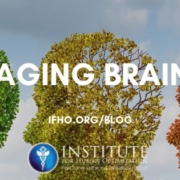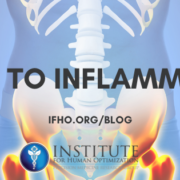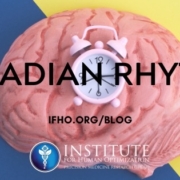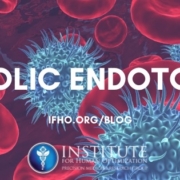Longevity Medicine – The Future of Medicine
In a world where technological advancements are reshaping our lives, the pursuit of longevity has become an increasingly prominent focus. Longevity medicine, with its promise of extending not just lifespan but healthspan, offers a revolutionary approach to wellness. This blog post delves into the core concepts of longevity medicine, addressing the current flaws in our healthcare model, exploring the distinction between healthspan and lifespan, and unveiling the hallmarks of aging. We’ll also discuss the concept of biological upgrades and our mission at the Institute for Human Optimization.
The Problem with Our Healthcare Model
Our current healthcare system is predominantly reactive, designed to treat illnesses rather than prevent them. This model often leads to the treatment of symptoms rather than addressing the root causes of diseases. The focus is on managing chronic conditions rather than promoting optimal health and preventing the onset of these conditions in the first place.
Longevity medicine challenges this paradigm by shifting the focus from disease treatment to health optimization. By leveraging cutting-edge technologies and scientific insights, longevity medicine aims to detect and address potential health issues before they become significant problems. This proactive approach can lead to improved overall health and well-being, thereby extending both lifespan and healthspan.
Healthspan vs. Lifespan
While the term “lifespan” refers to the total number of years an individual lives, “healthspan” is the period during which a person remains healthy and free from serious chronic diseases. Longevity medicine emphasizes the importance of healthspan, advocating for a life characterized by vitality and good health for as long as possible.
Extending lifespan without considering healthspan could result in more years of poor health and diminished quality of life. Therefore, the goal of longevity medicine is not merely to add years to life but to add life to years. This involves optimizing physical, mental, and emotional well-being to ensure a high quality of life throughout the aging process.
Hallmarks of Aging
To understand how to extend healthspan, it is crucial to comprehend the biological underpinnings of aging. Researchers have identified several “hallmarks of aging,” which are the fundamental processes that drive the aging process. These 12 hallmarks of aging include:
- Genomic Instability: Accumulation of DNA damage over time, leading to mutations.
- Telomere Attrition: Shortening of telomeres, which protect chromosome ends, resulting in cellular aging.
- Epigenetic Alterations: Changes in gene expression without altering the DNA sequence itself.
- Loss of Proteostasis: Decline in the ability to maintain protein integrity and function.
- Deregulated Nutrient Sensing: Disruption in the body’s ability to manage energy and nutrient levels.
- Mitochondrial Dysfunction: Impaired function of mitochondria, the energy-producing components of cells.
- Cellular Senescence: Accumulation of aged cells that no longer divide or function properly.
- Stem Cell Exhaustion: Decline in the regenerative capacity of stem cells.
- Altered Intercellular Communication: Disruption in the signals between cells, leading to chronic inflammation and other issues.
- Microbiome Dysbiosis: Imbalance in the gut microbiome, affecting overall health.
- Compromised Autophagy: Reduced efficiency in the body’s ability to remove damaged cells and regenerate new ones.
- Chronic Inflammation: Persistent inflammation contributing to various diseases and degenerative conditions.
Understanding these hallmarks allows scientists and clinicians to develop targeted interventions that address the root causes of aging.
Data Driven, Proactive, Personalized Healthcare
At the heart of longevity medicine lies the power of data. By harnessing vast amounts of information from genetic profiles, biomarkers, and lifestyle factors, healthcare professionals can gain a comprehensive understanding of an individual’s unique needs. Advanced analytics and artificial intelligence are employed to interpret this data, identifying trends and potential risks long before they manifest as clinical symptoms. This proactive stance enables early intervention strategies that can prevent or mitigate health issues, ultimately promoting a longer and healthier life.
Personalization is another cornerstone of longevity medicine. Unlike the traditional one-size-fits-all approach, personalized healthcare tailors interventions to an individual’s specific genetic and phenotypic characteristics. This bespoke method ensures that treatments and preventive measures are not only effective but also aligned with the patient’s lifestyle and preferences. Personalized nutrition plans, exercise regimens, and medication protocols can significantly enhance outcomes by addressing the unique drivers of aging in each person.
The integration of continuous monitoring technologies, such as wearable devices and at-home testing kits, further enhances the personalized approach. These tools provide real-time data on a range of health metrics, from blood glucose levels to sleep patterns, allowing for dynamic adjustments to health plans and fostering a proactive rather than reactive stance to healthcare.
Biological Upgrades: Pioneering the Future of Longevity
One of the most exciting frontiers in longevity medicine is the concept of biological upgrades. This transformative approach involves using advanced biotechnologies to enhance the body’s natural capabilities, thus improving resilience against aging and disease. Biological upgrades can take many forms, from gene editing techniques like CRISPR to regenerative medicine strategies that rejuvenate tissues and organs.
For instance, therapies that target telomere extension could potentially reverse cellular aging, leading to a decrease in age-related diseases and an increase in lifespan. Similarly, stem cell therapies offer the promise of regenerating damaged tissues, restoring function and vitality in aging bodies. Moreover, advancements in synthetic biology could enable the creation of novel proteins or even entirely new biological systems, designed to enhance human health in ways previously unimaginable.
These innovations not only hold the promise of extending healthspan and lifespan but also challenge us to rethink the very nature of human biology and aging. As we move forward, ethical considerations, accessibility, and equitable distribution will be crucial to ensure that these powerful technologies benefit all of humanity.
OUR MISSION at the Institute for Human Optimization
At the Institute for Human Optimization, a premier longevity and health optimization center located in Maryland, our mission revolves around harnessing the power of longevity medicine to create transformative health outcomes. We are committed to advancing the science of human longevity through innovative research, cutting-edge technologies, and individualized treatments. Founded by Anil Bajnath, MD focusing on prevention, early detection, and personalized interventions, we aim to redefine what it means to age.
Our interdisciplinary team of experts collaborates across various fields, including genetics, biochemistry, nutrition, and regenerative medicine. Together, we strive to uncover the most effective strategies for extending healthspan and enhancing quality of life. We believe in empowering individuals with the knowledge and tools to take control of their health, promoting a proactive and preventive approach to wellness.
Whether it’s through our advanced diagnostic services, bespoke wellness programs, or state-of-the-art therapeutic interventions, we are dedicated to pushing the boundaries of what’s possible in human health. At the Institute for Human Optimization, we envision a future where aging is not a passive decline but an active, enriching journey marked by vitality and well-being.












Leave a Reply
Want to join the discussion?Feel free to contribute!